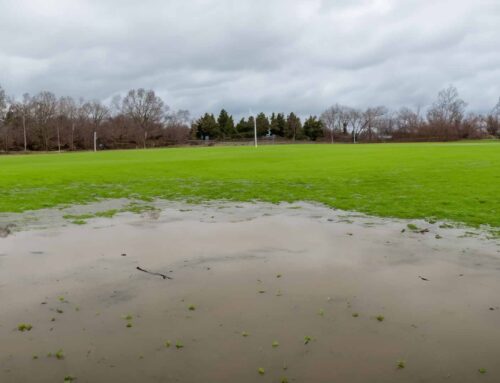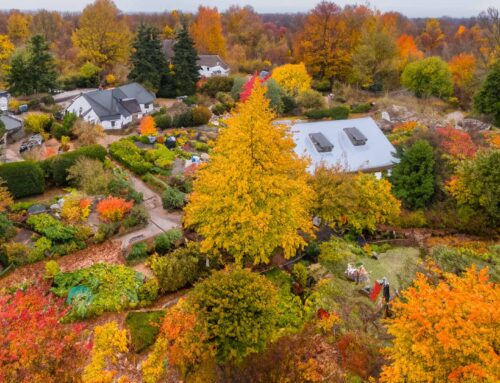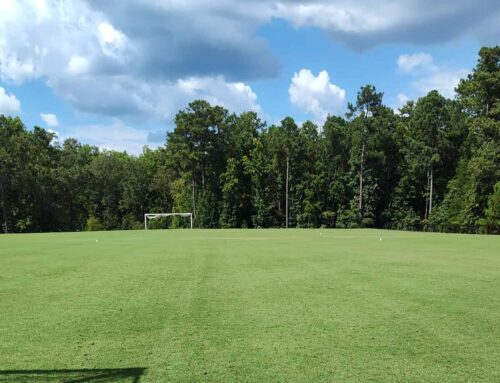Georgia Lawn Care: Your Ultimate Guide to a Thriving Summer Lawn
Living in Georgia comes with undeniable perks. From the vibrant community to the stunning scenery, it’s a place where life flourishes. But with summer’s arrival, maintaining a lush, thriving lawn presents unique challenges. Georgia’s hot, humid climate can wreak havoc on your precious green space if you’re not equipped with the right knowledge and strategies.
This comprehensive guide is your one-stop shop for creating a flourishing summer lawn in LaGrange. We’ll delve into essential watering techniques, effective lawn maintenance practices, and proactive solutions for combating seasonal pests and diseases. By following these tips and insights, you can achieve that picture-perfect lawn that complements your beautiful Georgia property.
Georgia’s Summer: A Blessing and a Challenge for Lawns
Georgia’s summers are a symphony of sunshine, warmth, and vibrant green growth. However, the intense heat, coupled with high humidity, can quickly deplete your lawn’s moisture reserves. This, combined with potential drought periods, can lead to brown patches, stunted growth, and an overall parched appearance. The good news? Understanding these challenges empowers you to implement proactive solutions.
Watering Strategies: Keeping Your Lawn Hydrated
Watering is the cornerstone of a healthy summer lawn. But simply spraying your grass won’t suffice. Here’s how to ensure your Georgia lawn receives the optimal hydration it craves:
- Watering Schedule: Aim for deep watering sessions once or twice a week during the early morning hours (between 4 AM and 8 AM). Early morning watering allows moisture to penetrate the soil before the scorching midday sun evaporates it. Never water during the hottest parts of the day, even if your grass is wilting. Watering during the hottest times will actually do more harm than help since the ground surface can be even hotter than the air temperatures and the water will end up evaporating instead of soaking into the ground.
- All grasses need at least 1 inch of water a week. Deep watering twice a week helps develop deeper roots, deeper roots are better for surviving dry stretches. Frequent shallow watering only encourages the plant to grow roots closer to the surface with means they dry out quicker.
- Monitor Soil Moisture: Don’t rely solely on a schedule. Invest in a moisture meter to gauge your soil’s hydration level. Water deeply when the top 2-3 inches of soil feel dry to the touch.
Water Conservation Tips:
Inspect Your Sprinkler System: If your system doesn’t have a rain sensor, adding one will help prevent accidentally watering when it is raining and keep you from having to worry about turning the clock on or off. Annual inspections of your system will ensure that the sprinkler heads are operating properly, not watering concrete areas, and watering for the correct amount of time.
Lawn Maintenance: Keeping Your LaGrange Lawn Lush
Beyond watering, proper summer lawn maintenance is crucial for a healthy, vibrant appearance. Here’s what you need to know:
Mowing Techniques: Mow regularly throughout the summer. Never remove more than a third of the leaf blade at a time. Raising the height of cut as the temperatures rise will help with soil moisture retention and keep the surface of the soil cooler. Always mow in alternating directions each time. This promotes healthy growth and discourages weeds.
Sharpen Your Blades: Dull mower blades tear the grass blade instead of cutting, making it susceptible to disease. Sharpen your blades regularly to ensure clean cuts and optimal grass health.
Fertilization: Conduct a soil test to determine your lawn’s specific nutrient needs. Apply fertilizer based on the test results, following the recommended application rates and timing for your grass type.
Pro Landscaper Tip: Aeration for Healthy Roots
Consider core aeration in the early summer for warm-season grasses and in the fall for cool-season grasses. Opening up the ground helps move oxygen into the soil and makes it easier for water to penetrate deeper, which will help grow deeper roots.
Weed Control: Due to our longer growing season, many of the toughest weeds to control (Doveweed, Goosegrass, Sedges, and Virginia Buttonweed, to name a few) thrive in the summer. This makes a strong weed control program important. The earlier you can catch the weeds and start controlling them, the better your chances are of having a weed-free yard when the hottest parts of summer arrive.
Other than nutsedge, which is more difficult to control, many weeds are easily pulled when young or after a good soaking rain. Hand-pulling weeds is a great strategy for light infestations and can also help you with scouting for other issues. For heavier infestations or nutsedge, chemical control is the best and quickest option.
Identification of the weeds is the most important part of selecting an herbicide. There are general herbicides that work on many weeds, but tougher ones require selective herbicides designed for them. Always follow the directions on the label for whichever herbicide you use.
If you need help selecting an herbicide or advice on herbicides, your local extension office can help, or you can always call us. Many weeds can be identified using a plant identification app on your smartphone, contacting your local extension office, or bringing a sample to our office.
Seasonal Pests & Diseases: Protecting Your LaGrange Lawn
Summer’s warm, humid conditions create a breeding ground for certain pests and diseases. Here’s how to keep your LaGrange lawn protected:
Common Summer Pests:
- Grubs: These plump beetle larvae live underground, feeding on grass roots. Their activity can lead to brown, patchy areas in your lawn. Unfortunately, this isn’t the only damage. Predators like armadillos and moles searching for grubs will further damage your lawn by digging them up. If you’re seeing mole or armadillo activity, it’s a good sign you have a grub problem that needs treatment. Preventative measures can be taken before peak season to avoid this issue.
- Fall Armyworms: Don’t let their name fool you because they can appear as early as July in our area. Fall armyworms are actually caterpillars that become moths. They prefer to feed on bermudagrass and can eat their way across a yard in a day or less depending on the size. The female moth will lay her eggs on anything from tree trunks to fence posts to light poles to playsets. The egg clutches are white or gray and the more clutches, the more likely you are to have an infestation about to occur. Birds love armyworms so they are a great indicator for infestations before the damage starts to be visible.
- Fire Ants: Fire ants can build unsightly mounds and deliver painful stings. While they play a role in the environment by aerating with their tunnels, they can certainly disrupt your outdoor enjoyment. Early detection is key and granular baits are effective for smaller colonies. If you spot fire ant activity, consider contacting a professional for safe and effective control methods that target the queen and the colony itself.
Common Summer Diseases:
- Large Patch disease: This disease occurs in spring and fall on warm-season grasses, but it does not affect cool-season grasses. Zoysia lawns in our area are commonly affected, but it can be treated with fungicides and proper turf management.
- Brown Patch disease: Brown Patch affects cool-season grasses, appearing as circular patches of brown, wilting turf. Poor drainage, lack of air movement, shade, and improper watering practices (overwatering or poor schedules) combined with unbalanced fertilization (excessive nitrogen with low potassium and phosphorus) create ideal conditions for Brown Patch development.
- Dollar Spot: Dollar Spot, a fungus that thrives in warm, humid weather, is most prevalent in turf with low nitrogen levels. Proper fertilization can help prevent and recover from infestations.
- Fairy Ring: Fairy Ring is caused by decomposer fungi that don’t directly attack living grass but can cause problems. These fungi feed on decomposing wood in the soil and thatch, creating large dark green circles and mushrooms. Proper thatch management, removing wood debris before planting, and maintaining balanced fertility levels are the most effective ways to prevent Fairy Ring. If the soil becomes hydrophobic inside the ring, aerate the area and hand-water to prevent overwatering unaffected areas.
Pro Landscaper Tip: Prevention is Key
Regular lawn inspections, proper watering practices, and a proactive approach to pest and disease control will go a long way in protecting your LaGrange lawn throughout the summer. Early detection allows for swift intervention, minimizing potential damage and ensuring a healthy, vibrant lawn.
Care After Planting
Watering: After planting new turf, it’s important to keep the soil surface lightly moist to ensure proper establishment. Water daily with about ⅛- to ¼-inch of water for the first 1 to 2 weeks. As the roots grow, gradually water less often but more deeply. This helps the roots to develop properly. The Georgia Water Stewardship Act allows for the irrigation of new turf for 30 days after planting. If the grass was planted using sod, an easy way to monitor root growth is to gently pull up a corner of the sod. For the first two weeks the sod will be fairly easy to pull up but you should be seeing new roots growing. As the sod establishes it will become more difficult to pull up the sod pieces.
Mowing: Mow on a consistent schedule, never cutting more than a third of the leaf blade at one time. For warm-season grasses, like bermuda and zoysia, this can be every 5-7 days, but for centipedes it can be every 2 weeks. Cool season grasses do not usually grow very much in the summer and should be kept taller during the summer months to give the roots shade. For new sodded areas do not mow until the sod has rooted and always use a lighter weight mower (push mower is best if feasible) with sharp blades for the first few mowings.
Fertilizing: Depending on your turf, your lawn will need between 1-4 pounds of nitrogen per 1000 square feet per summer. We recommend using a fertilizer that is at least 50% slow-release nitrogen to avoid having drastic spikes and drop-offs in growth. Phosphorus and potassium help with root growth and overall plant health respectively. Both have longer residual in the soil than nitrogen to soil tests are necessary to check the levels of both.
Weed Control: Keep weeds in check by pulling them by hand or mowing frequently. For heavier infestations, apply appropriate herbicides as directed by the product label.
Beyond the Basics: Creating a Show-Stopping LaGrange Lawn
While the tips above provide a solid foundation for a healthy summer lawn, here are some additional practices to elevate your LaGrange lawn from good to great:
Overseeding: For cool-season grasses like Fescue, consider overseeding in early fall to thicken the lawn and improve its overall appearance. You can also overseed bermuda with perennial ryegrass (annual ryegrass doesn’t perform as well) to have your yard green year-round. We recommend only overseeding bermuda lawns that are healthy and thick to begin with, otherwise the ryegrass will steal valuable nutrients from the bermuda in the spring. Overseeding with ryegrass also makes Poa annua control more difficult and the ryegrass must be killed in the early summer to keep your bermuda lawn aesthetically pleasing.
Aeration and Topdressing: Aerating and topdressing will improve your soil and help manage thatch. Topdressing can be done with sand, organic matter, or a combination of the two. Soil sampling will help determine what type of material to use for topdressing.
Addressing Specific Challenges: Georgia experiences a variety of soil types, from sandy loam to clay loam. Understanding your specific soil composition allows for targeted amendments and fertilization strategies to optimize your lawn’s health.
Creating a Personalized Summer Lawn Care Plan
While this guide provides valuable information, every LaGrange lawn is unique. Factors like grass type, soil composition, sun exposure, and watering needs all play a role in crafting the perfect summer lawn care plan. Contact us for a free assessment from one of our lawn care professionals. We will come to your property and help you with tips and solutions to make your yard a personal oasis.
The Benefits of a Professional Lawn Care Service
Partnering with a professional lawn care company like LaGrange Landscape offers a multitude of benefits:
- Peace of mind: Knowing your lawn is in the hands of experienced professionals allows you to relax and enjoy your beautiful outdoor space without the burden of lawn care chores.
- Expertise and knowledge: Our team possesses the expertise and knowledge to address any lawn care challenges specific to LaGrange’s climate and soil conditions.
- Time-saving convenience: We handle the heavy lifting, freeing up your valuable time to spend on what matters most.
- Guaranteed results: Many professional lawn care companies offer satisfaction guarantees, ensuring you’re happy with the results.
Investing in a Thriving Summer Lawn
A well-maintained lawn not only enhances your property’s curb appeal but also provides a healthy, inviting space for your family and friends to enjoy. By implementing the strategies outlined in this guide and considering a professional assessment, you can achieve a thriving summer lawn that becomes the envy of the neighborhood.
Contact us today for a free consultation and discover how we can help you transform your LaGrange lawn into a lush, vibrant oasis this summer!





